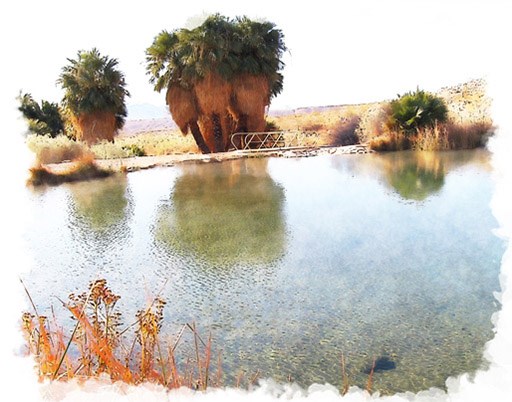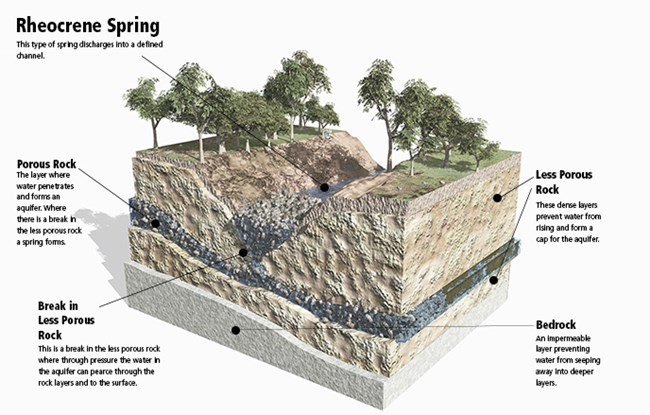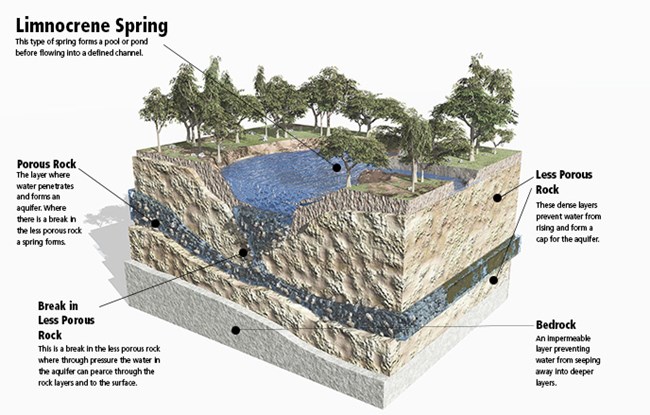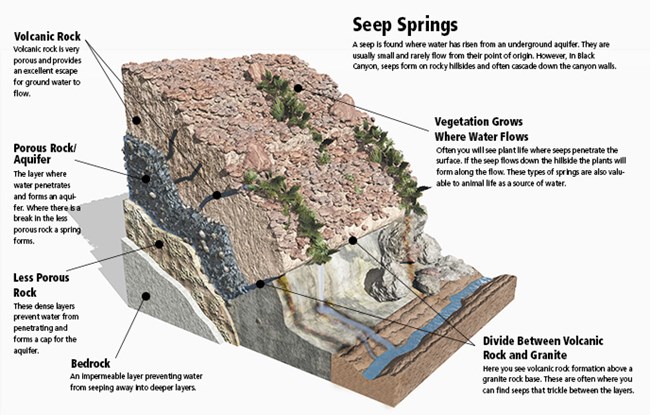
Lake Mead is one of the country’s largest fresh water bodies. However the lake is only part of the hydrological lifeblood of Lake Mead National Recreation Area. Springs located throughout the park allow wildlife and plants to thrive in an otherwise inhospitable environment. Lake Mead has over 300 springs of which eighty-nine have been surveyed. Most of these springs are below 1,000 ft in elevation and have very low flow rates, less than two gallons per minute. Several springs at Lake Mead also provide visitors with a unique experience. Springs come in several varieties from hot springs that can get up to 140 degrees F., to seeps of water that trickle out of crevices in the rocks of Black Canyon. The springs you can see all year round are called perennial. They have a source that comes from an aquifer located underground. The other type of spring is called ephemeral. Ephemeral springs have a source closer to the surface and usually only flow when the ground becomes saturated after it rains. Once the water source runs dry, so does the spring. Spring Types
Rheochrene SpringsRheochrene Springs are the most common type found at Lake Mead. These springs rise from the underground aquifer and flow directly into a channel or stream.
Limnocrene SpringsThe main difference between the Rheochrine and Limnocrene is that with the Limnocrene the water pools before flowing.
Seep SpringsSeep Springs are found where water has risen from an underground aquifer. They are usually small and rarely flow from their point of origin. However, In Black Canyon, seeps form on rocky hillsides and often cascade down the canyon walls.Interesting FactsThe importance of springs as a habitat support a large proportion of aquatic and riparian species. These springs are known as “biodiversity hot spots” where several hundred species or subspecies of fishes, mollusks, crustaceans, aquatic insects and plants are endemic to the western U.S. Several endangered species can be found around the springs of Lake Mead.. The relict leopard frog, which at one time was thought extinct, can be found at several locations. Non-native (or invasive) species of wildlife have been documented in the springs. Most of the springs in the Lake Mead region are easily accessible and therefore have been subject to human interaction adversely affecting the springs. The park has taken on the monitoring of some of the more popular springs. Rogers and Blue Point springs are high priority because of their size and concentration of rare aquatic species. The greatest management challenge for Lake Mead springs is to restore degraded habitats, control invasive species, and prevent future habitat loss and establishment of non-native species. Restoration programs are needed to heal the effects of human activities that have altered almost one-half of park’s springs. It is also important for the visitor to remember that the invasive Quagga Mussel, found throughout the lake, can also damage the spring habitat. If you go to a spring from the lake, make sure that you are not unknowingly transporting a mussel. Here at Lake Mead we have a saying, “Don’t move a mussel!” Although springs, especially hot springs, are safe and fun to relax in, there is a slight danger from a rare and lethal amoeba called Naegleria fowleri. From 2002 to 2011, the Centers for Disease Control recorded 33 cases, with a 98% death rate. This is not to say you cannot enjoy the springs in Lake Mead, just take some simple precautions. The amoeba enters the body through the nose only, it will not harm you if swallowed. Plugging your nose when going underwater, or keeping your head above water will prevent any infection. This is rare, but please be careful. |
Last updated: December 14, 2022
